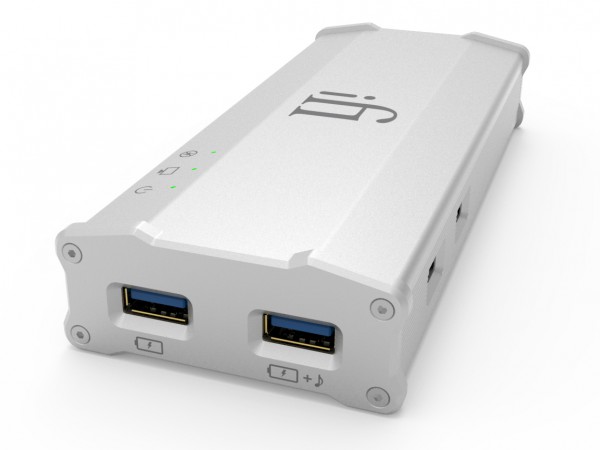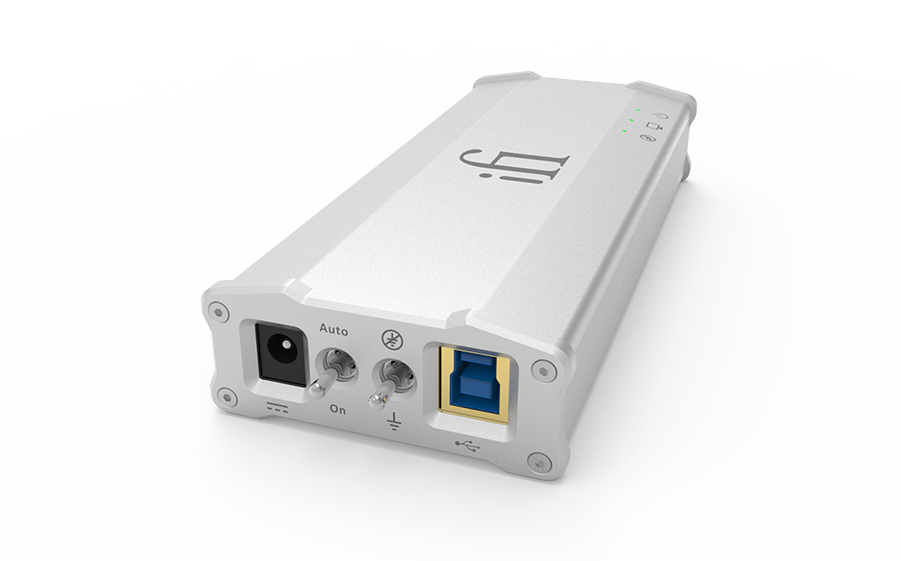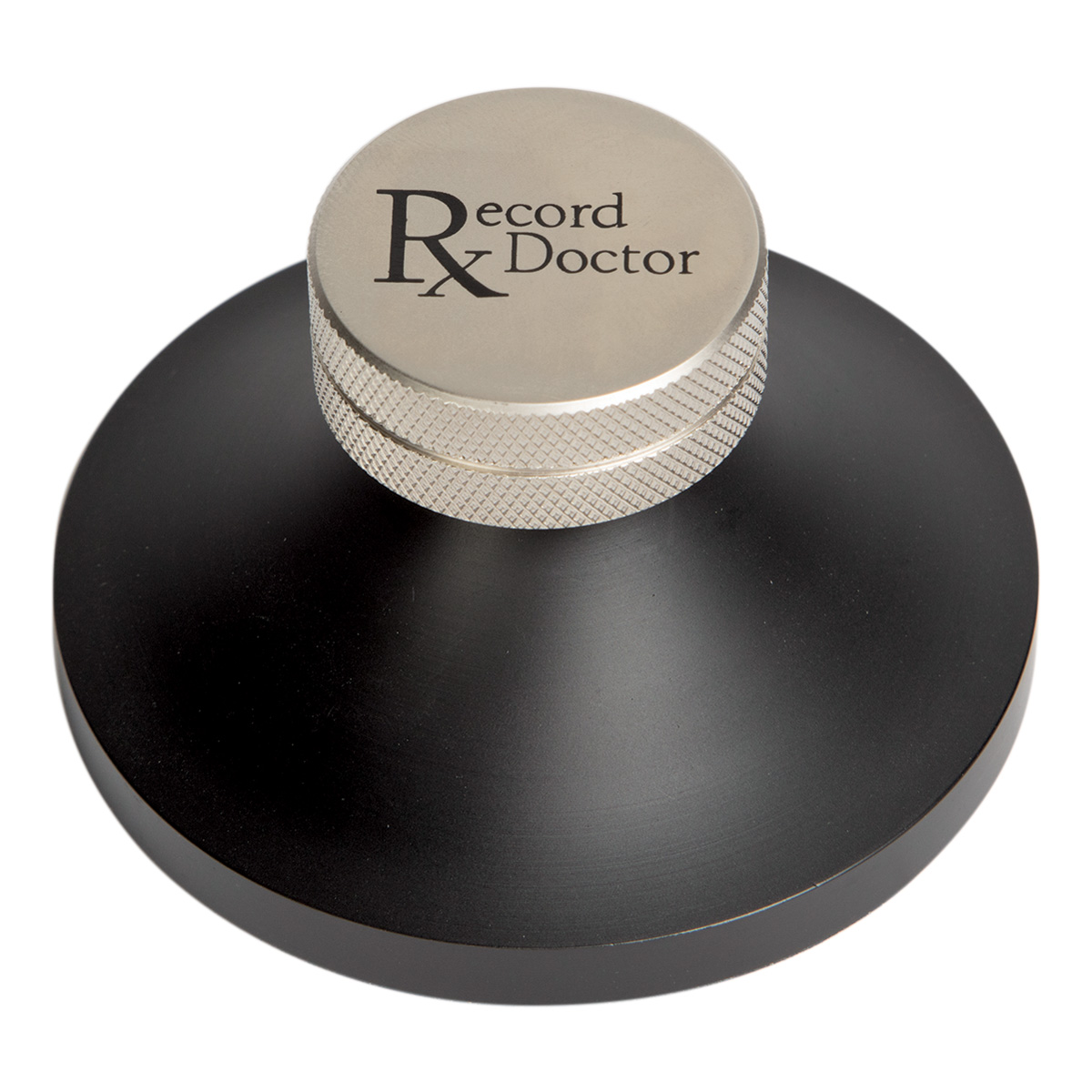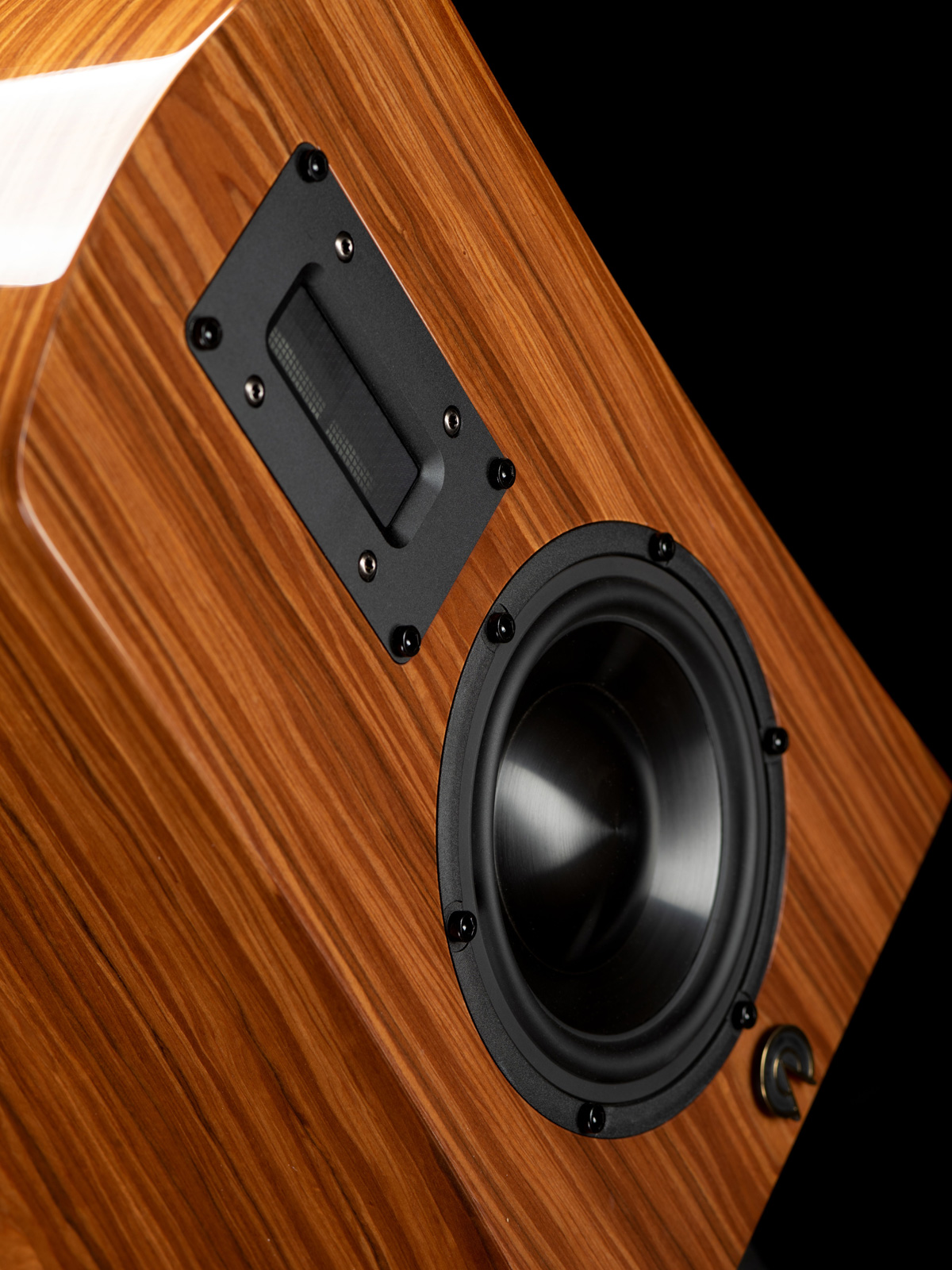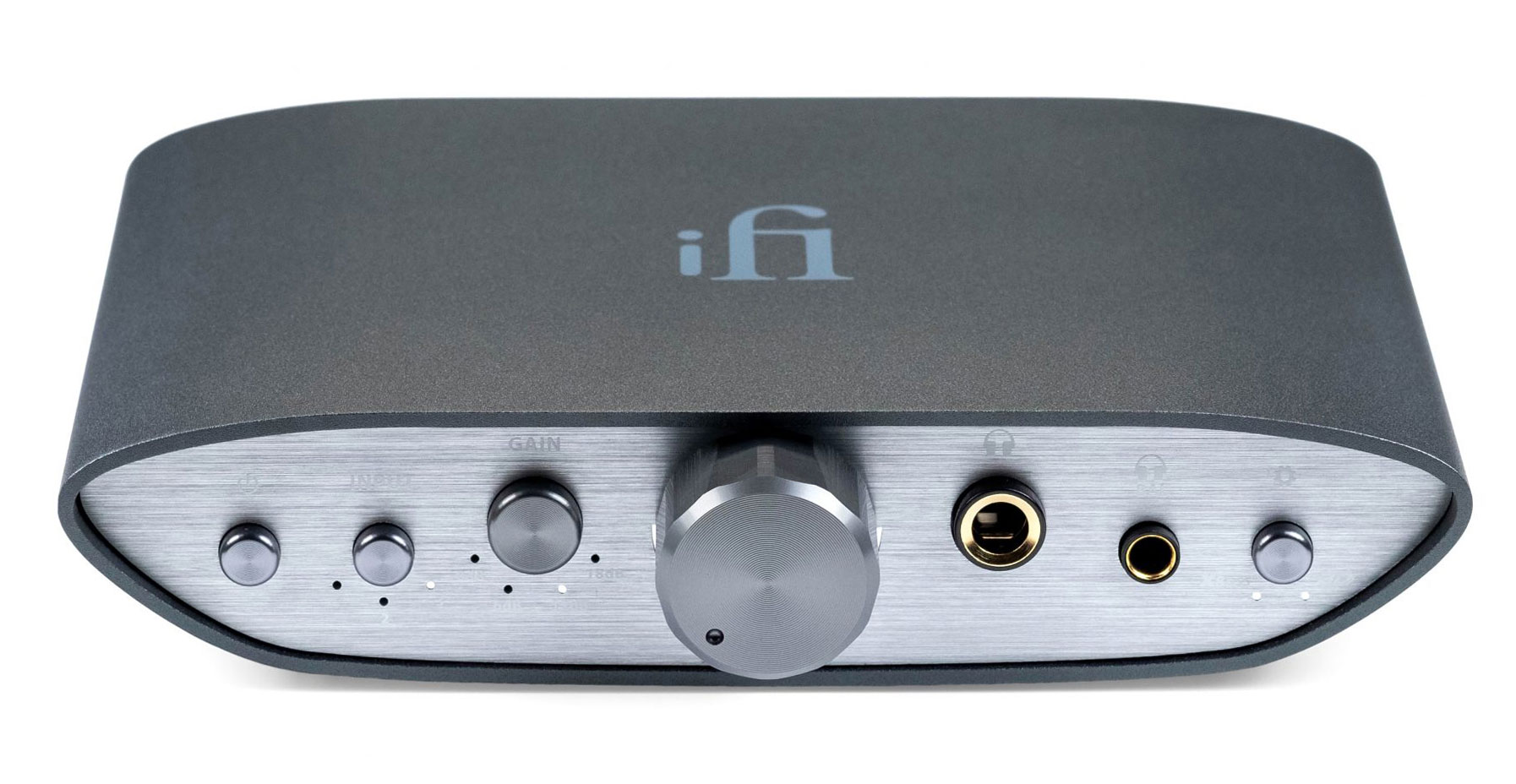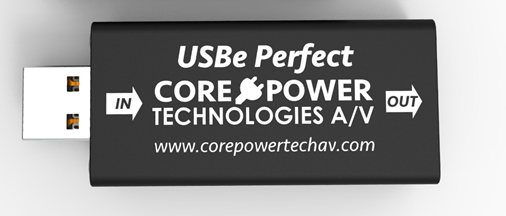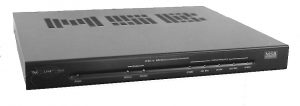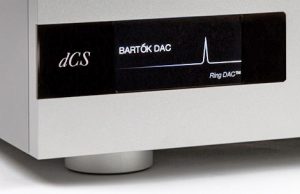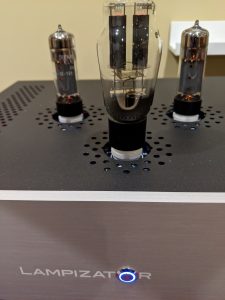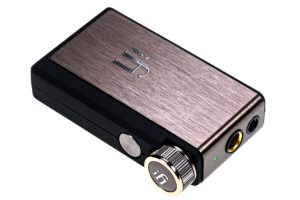The impact of computers as a source for high quality musical enjoyment cannot be underestimated. Computers allow listeners to store and stream massive amounts of musical data from the convenience of a laptop or other device in a manner that no other platform could before. Getting the most musical sound out of all those files is the objective of companies such as iFi. iFi is a subsidiary of Abbington Music Research, a London based audio atelier.
My editor, Dave Clark was happily breaking in the iFi products when he enthusiastically suggested that I give them a go. The iDAC2 ($350) is a portable desktop DAC and headphone amplifier. The iDAC2 shares many top shelf parts and technology with AMR's premium line and best described by visiting their website. The iUSB 3.0 ($400) is an optional noise and jitter reducing USB power supply that can also benefit other USB DACs on the market. Additionally, iFi included their dedicated Gemini ($190) and Mercury ($105) USB cables.
My main system C7R is essentially a $3000 75 watt powered DAC with input functions from Bel Canto, a leader in the field. My musical collections consist of about 50/50 Apple Lossless transfers from CDs and MP4(256/44.1) downloads. I don't recall the last time I played a CD. LPs are unquestionably my high-resolution reference. Listening time is equally divided between playing records and iTunes playlists on my Mac Mini.
iDAC2
The iDAC2 was the first item installed. Given the iFi's portable desktop nature, the unit was connected to my MacBook Pro rather than the Mac Mini. Data traveled from the laptop to the iDAC2 through iFi's Mercury USB cable. The analogue signal was then routed to the line source input of the C7R with a two ft. length of Art Audio Art IC-3 RCA interconnects. For the sake of consistency, I kept the iDAC2's filter toggle switch set to standard.
As fate would have it, I am currently under the spell of two British pop stars, Ellie Goulding and Ed Sheeran. Ellie's songs "Burn" and "Love Me Like You Do" showcase her distinctive voice with some electronic embellishment and layered arrangements. With the iDAC2, I could hear deep into the corners of the music and appreciate the amalgam of natural and electronic textures. Goulding sings like she breathes from a lighter purer atmosphere. The iFi highlighted the luster of her voice like finely polished sterling silver. Bass lines pulsed with quick energy, movement, and clarity. "Lay it All on Me" by Rudimental featuring Ed Sheeran is another electronic dance music infused gem. The song is a mash up of soulful rhythm-and-blues influenced singing over an infectious dance beat. The iDAC2 skillfully rendered the various musical details in the arrangement that capture your attention for an instant before fading away like images in the periphery of vision as you drive down the road at pace. And my foot pumping an imaginary bass drum showed that the iFi indeed keeps excellent pace, rhythm, and timing.
On the jazzier side of the spectrum, I've recently discovered a musician named Kurt Rosenwinkel. Kurt is a masterful guitar player, composer, arranger, and producer. His 2012 recording Star of Jupiter should be subtitled Kurt is from Jupiter and Has Six Fingers on this Left Hand because that is what his amazing technique sounds like. Star of Jupiter has Kurt in a quartet with piano, bass, and drums. The track Heavenly Bodies is an 11 and a half-minute ballad that recalls the harmonic invention of Burt Bacharach and Pat Metheny. The iDAC2 expertly produced a wide and deep sound space with musicians occupying real space before me. The crystalline sound and coherent images of cymbals were particularly captivating.
The Andante from Piano Concerto No. 2 in F Major by Shostakovich as played by Cristina Ortiz and Royal Philharmonic under Vladimir Ashkenazy on Decca is a profoundly moving piece of music. The iDAC2 immersed this listener with rich harmonic depth of the orchestra and transcendent display of piano so expressively played by Ms. Ortiz.
The iDAC2 also served time as amp for a pair of highly regarded Oppo PM-1 headphones. (When used as a DAC with line level output to an amplifier, the volume knob should be set to zero.) The headphone input only accepts eighth inch mini plugs. Therefore a ¼ inch adapter was used to connect the PM-1. Space on the front of the iDAC2 is minimal so oversized adapters may rub against the volume control.
As if I wasn't already positively impressed with the iDAC2, listening to the aforementioned tracks through the Oppo PM-1 headphones was one of the most musically engaging experiences with desktop audio ever. Music flowed out of the iDAC2 in luscious layers like an aural rainbow of sound and color. The iDAC2's control over the headphones was absolute. Every thumping beat, breathy nuance, and dynamic shift was rendered in high definition. The illusion of space is one of the most challenging qualities for headphones to reproduce. Yet, the iDAC2 revealed detailed musical images across a broad sound space beyond the confines of my head.
iUSB3
Years ago at the advent of digital audio, legions of discerning listeners were dissatisfied and fatigued with the thin sterile sound of CD players of the era. As a result, audio engineers split the CD players functions into two parts, transport and DAC. In addition, companies such as Linn, Rega, and Naim have long recognized the musical benefits of a robust and well executed outboard power supply. Likewise, iFi has thoroughly addressed the issues of USB for musical data transfer with their iUSB3. The technology contained within the small sturdy aluminum casework is comprehensive and best explained by visiting their website.
The iUSB3 installs before and USB DAC with an additional USB cable. The iDAC3 must be plugged into an AC power outlet with its dedicated noise reducing iPower 9v wall wart. Maximum benefit can be achieved by using iFi's Gemini USB cable, which splits the data transfer and power supply leads. The overall affect of the iUSB3 in the chain was a significant reduction of background noise, increased depth of perception, and vacuous silence between notes.
"Bottomliners" by Brian Eno from his 2005 recording Another Day on Earth is a tune I don't often play unless I'm evaluating a component. The last forty seconds slowly repeat and layer the words "all bottomliners". The result is like holding up a mirror to another mirror, an infinite tunnel of images. Listening to this song with the iUSB3 made it possible to hear further down into the tunnel of voices than previously experienced with both the headphones and the main monitors.
Clearly, the iFi products are very well designed, assembled with a high level of quality, and sound superb. Returning to my reference I was pleasantly surprised to discover how close the iFi units matched the esteemed C7R. The Bel Canto's low bass had a more heft and warmer midrange and beyond. But the little iFi units counter with ultra transparency, image coherence, and retrieval of musical details in the recordings that perform far beyond their price range.
If you are pondering the next level of desktop audio happiness or even as components for a solid main system, iFi Audio's iDAC2 and iUSB3 are highly recommended and should be auditioned before arriving at a conclusion.
iDAC2
Retail: $350
iUSB 3.0
Retail: $400
Ifi
www.ifi-audio.com





